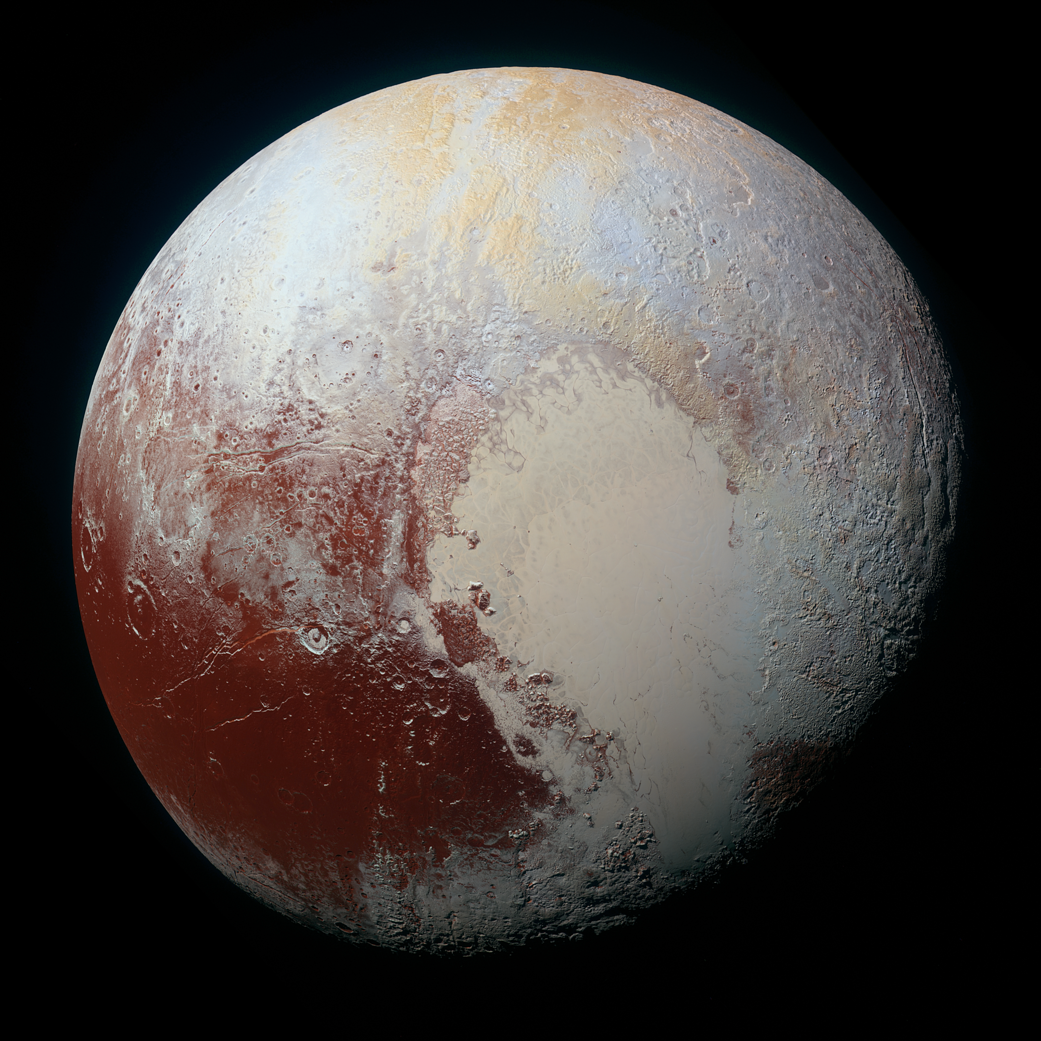Has there ever been a place you knew you just had to get to? Maybe you saw it in a movie or on a postcard taped to someone’s fridge; maybe it came to life for you in the pages of a book. All that mattered was the sudden intensity with which you knew: I have to go. I have to see that world for myself. I have to stand there, staring up at buildings or forest leaves or the great open sky….
For my dad, that place was Colorado, and he tries to go back every year. For me, unfortunately, it’s Pluto.
The closest approach of the New Horizons spacecraft to the dwarf planet Pluto occurred at 11:49 UTC on July 14, 2015, when it passed just ~7,750 miles (12,472 km) above the surface. Newspapers across the world were covered in stunning images of a world unlike any ever imagined — the old ex-planet that had been little more than a fuzzy dot since its discovery by Clyde Tombaugh in 1930 was now a full-fledged geologic wonder. And, as graphic designers everywhere gleefully noted, ‘It has a heart!’ In addition to being a brave new world, Pluto also had the good fortune to be a pleasantly photogenic one, ready to capture the attention of the public for months on end.
Meanwhile, also on July 14, 2015, I happened to be a twenty-year-old undergraduate intern at the Lunar and Planetary Institute, nervously making my way into the world of planetary science (and business casual dress codes) for the first time. I’d begun the summer thinking there’d been some kind of mistake, that my advisor and the LPI as a whole would realize they’d picked the wrong application file from the stack and ended up with a geophysicist-in-training who knew more about picking seismic lines than developing her geologic intuition, and that then I’d be summarily fired. And yet, day after day, I got to stay. When I paced the halls on my breaks I stared hungrily at the walls, which were proudly lined with image mosaics and geologic maps from decades upon decades of spacecraft missions. My world was suddenly heavy with legacy.
Then came New Horizons.
The planetary science community loves a good celebration, and the arrival of Pluto’s first spacecraft presented the perfect opportunity. The whole building was abuzz with joy and speculation; the interns were no exception. We were busy eagerly guessing at what the dwarf planet would look like, what images we’d get back and whether there’d be any geologic activity to speak of. Earlier that summer I’d tried to talk to one of the New Horizons team members that happened to work at the LPI; I was hoping to ask him about processing spacecraft image data and how he’d managed to be one of the best at looking at icy worlds across the Solar System. Instead, I walked into the doorframe of his office, made a noise like a boiling tea kettle, and was so mortified that I barely managed more than two coherent sentences before wobbling back to my desk in defeat. At twenty I couldn’t explain to this man why I was so captivated by his work, or the worlds he studied. All I had was a hunger that I could barely articulate. It was only when the pictures began streaming back from Pluto that my dreams solidified.
Do you remember the first time you found that place, the one you knew you had to get to? What was it that struck you?
In the images released by the New Horizons team, Pluto gleamed like a great ornament; color enhancement drew the eye to the stunning white of nitrogen ice and the russet stains of tholins. At higher resolutions, nitrogen ice glaciers curled through jagged mountains of water ice, while massive, isolated peaks to the south hinted eagerly at the possibility of volcanism, somehow sustained on a world so far from the Sun that it had taken a spacecraft traveling at a blistering 14 km/s (almost 40,000 miles per hour) over nine years to get there. As my fellow interns and I waited for the next image, and the next, a newfound feeling of longing hit me with a sudden, breathtaking intensity. The New Horizons team battled data processing time and bandwidth issues to send us glimpses of great yawning canyons and sprawling mountain ranges, and I felt like a kid with my face pressed against the window of an airplane. Suddenly, Pluto was alive, and it was the most incredible thing I’d ever seen. I’d started my internship with no clue that geologists could do this kind of work, let alone on somewhere so far away; I left it convinced that somehow, some way, I would do my best to be a part of it too.
I have to go there. I have to study this.

#nasa #space-exploration #science #space #graduate-school #data science
